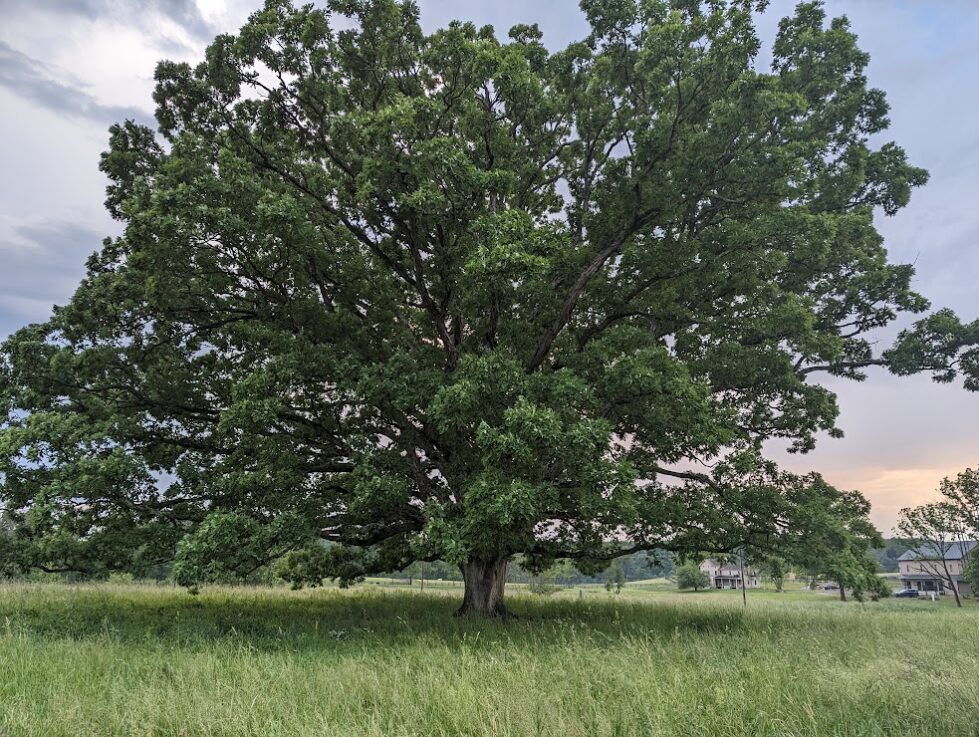If you are looking for a shade tree to add to your landscape, it’s essential to choose species that not only provide cooling relief during the hot summer months but also support local wildlife and offer year-round beauty. Shade trees are vital for several reasons:
Energy Efficiency: Trees help reduce the need for air conditioning by cooling your home with their shade. By strategically planting shade trees around your home, you can reduce your energy consumption and lower cooling costs.
Environmental Benefits: Shade trees absorb carbon dioxide and release oxygen, improving air quality and contributing to the reduction of the urban heat island effect. Their presence also helps reduce stormwater runoff by absorbing water and preventing erosion.
Wildlife Habitat: Shade trees provide food and shelter for various species of birds, insects, and mammals. Many trees, like oaks and maples, produce nuts or seeds that are crucial food sources for wildlife.
Aesthetic Appeal: Beyond their functional benefits, shade trees enhance the beauty of any landscape, providing structure, visual interest, and seasonal color changes that can transform your yard.
Here are a few top recommendations for native shade trees that can elevate your outdoor space.
1. White Oak (Quercus alba)
At the top of the list is the majestic White Oak. This is the tree you plant for generations to enjoy. With a potential height of over 100 feet, the White Oak is known for its sprawling branches and rounded crown, making it an awe-inspiring presence in any yard with enough space. While it’s often thought of as slow-growing, it’s surprising how quickly an oak can grow in just a few years.
Growing Conditions:
- Soil: Prefers well-drained, moist, acidic to neutral soils but can tolerate a variety of soil types.
- Sun: Full sun to partial shade.
- Water: Medium water requirements; tolerates drought once established but thrives in consistent moisture.
- Hardiness Zone: 3-9.
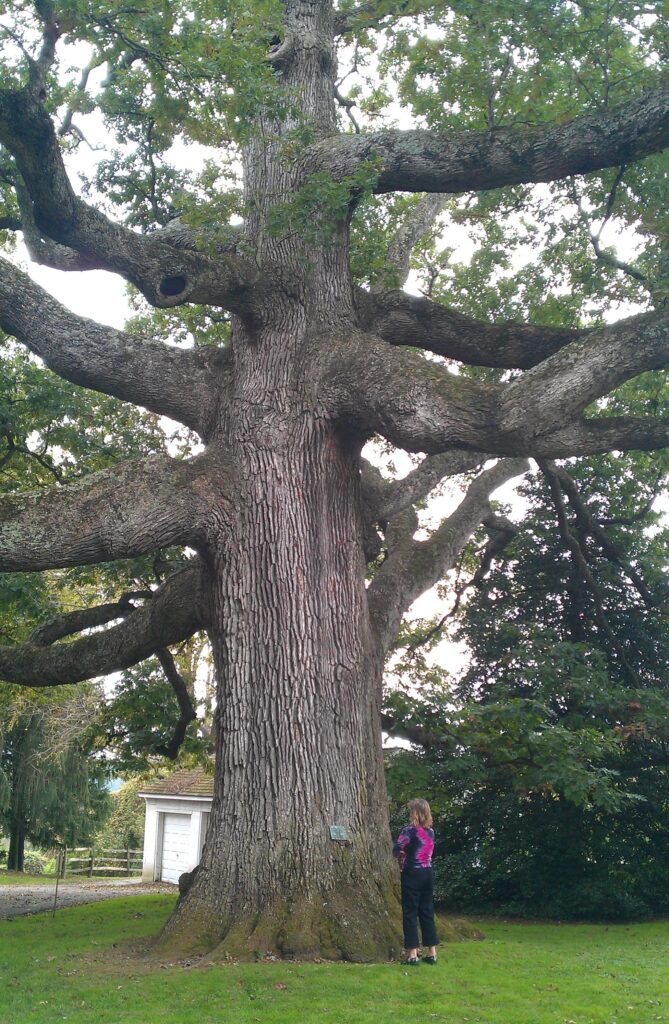
Beyond its striking beauty, White Oaks offer significant habitat value. Squirrels, rabbits, turkeys, and even blue jays love the acorns, while over 530 species of caterpillars rely on its leaves for food. The result? A constant parade of songbirds like warblers that frequent the branches, helping to control insect populations. In autumn, the leaves transform into shades of russet and wine, revealing the tree’s intricate branch structure in winter.
2. Red Maple (Acer rubrum)
Another favorite for its size and seasonal color is the Red Maple. Growing to a height of 40-60 feet, the Red Maple has vibrant red flowers in early spring, and in the fall, its leaves turn brilliant shades of red and yellow, creating a stunning display. It’s a versatile tree that thrives in a variety of soil conditions, making it a great option for many yards.
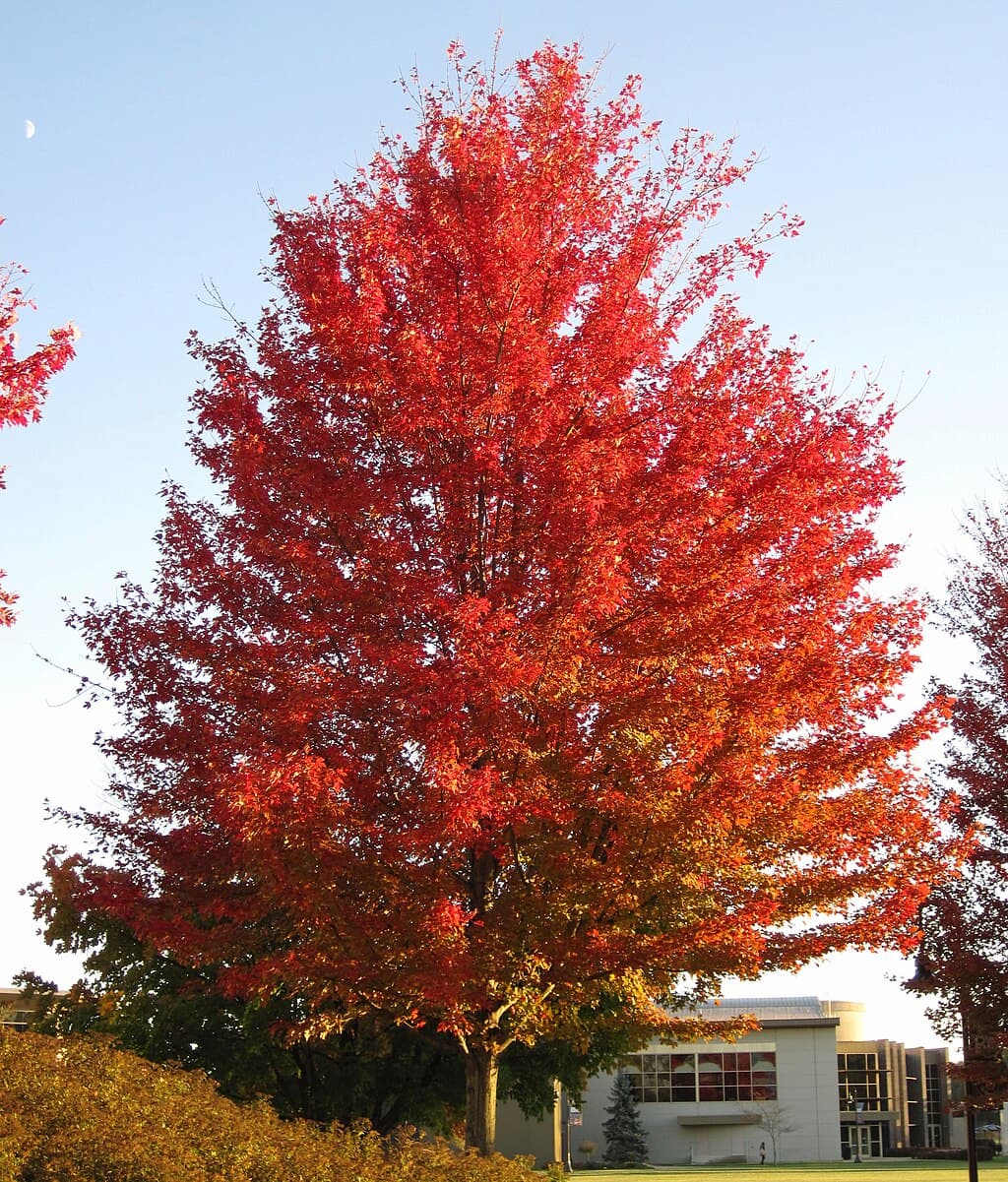
Growing Conditions:
- Soil: Can tolerate a variety of soil types, including wet and clay soils.
- Sun: Full sun to partial shade.
- Water: Medium once established. It tolerates wet conditions and is perfect for areas prone to flooding or heavy rainfall.
- Hardiness Zone: 3-9.
Maples also produce samaras, the winged seeds that many animals—such as finches and chipmunks—rely on for food. Plus, these little seed “helicopters” are fun to watch as they spiral down in the wind!
3. Black Gum (Nyssa sylvatica)
If you’re looking for a moderately sized shade tree, the Black Gum is a wonderful option. Typically growing to 30-50 feet, it has a slow to moderate growth rate, making it perfect for those who need a smaller tree that still packs a punch. Known for its pyramidal shape when young and more spreading habit as it matures, Black Gum offers stunning fall color, from yellow and orange to brilliant reds and purples.
Growing Conditions:
- Soil: Prefers moist, acidic, well-drained soils but can tolerate wet, clayey soils as well.
- Sun: Full sun to partial shade.
- Water: Medium to wet.
- Hardiness Zone: 4-9.
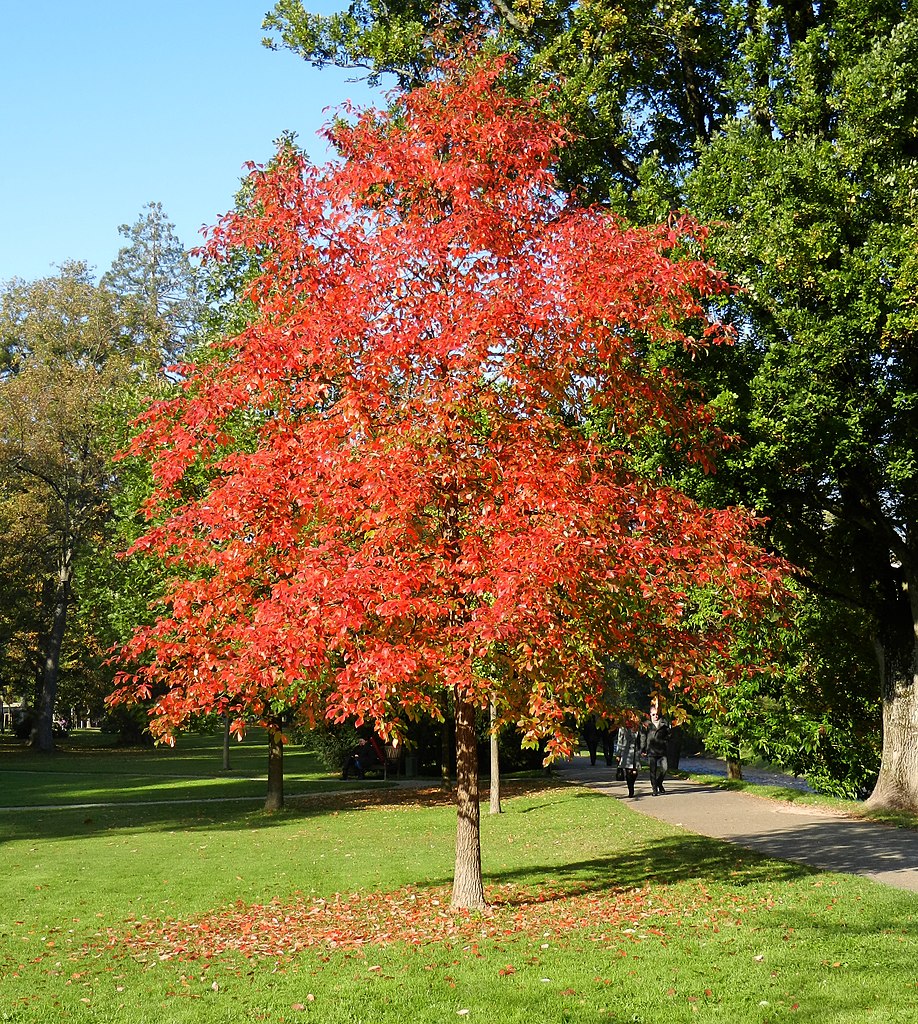
Beyond its beautiful foliage, the Black Gum is highly valued by wildlife. The small, dark fruits it produces in late summer are a favorite among birds like woodpeckers, blue jays, and cedar waxwings. If you’re seeking a tree with a manageable size, gorgeous fall color, and a high wildlife value, this is a great choice.
4. Shagbark Hickory (Carya ovata)
The Shagbark Hickory is another tree that adds unique character to any landscape. With its shaggy, peeling bark and irregular crown, it stands out even in winter when its rough bark becomes particularly dramatic. Growing up to 80 feet, it’s a bit larger, but its deep tap root means it should be planted small and given time to establish.
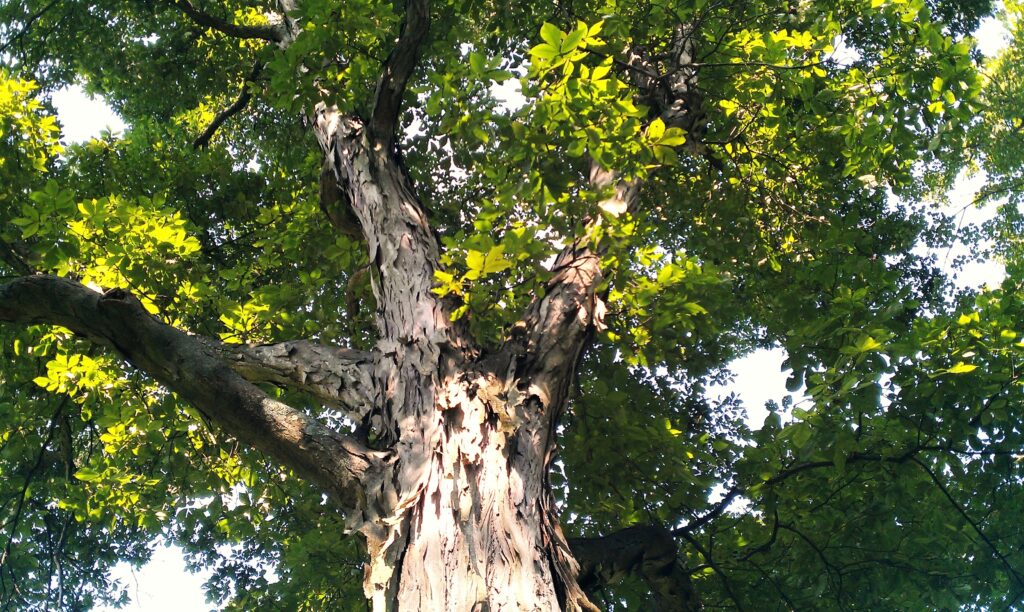
Growing Conditions:
- Soil: Prefers well-drained, slightly acidic to neutral soils.
- Sun: Full sun.
- Water: Low to moderate water requirements. Once established, it’s drought-tolerant but thrives with regular moisture.
- Hardiness Zone: 4-8.
Hickories also provide nuts that are enjoyed by a variety of animals, including rabbits, squirrels, and wild turkeys. The nuts are sweet, although they can be tricky to remove from the shell. But with patience, they can be roasted, baked, or eaten raw. In autumn, the golden-yellow foliage provides a stunning contrast to the dark bark, making it a standout tree throughout the seasons.
5. Kentucky Coffeetree (Gymnocladus dioicus)
For a shade tree with architectural interest, consider the Kentucky Coffeetree. This tree has thick stems and a coarse appearance, but it becomes a striking presence, especially in winter, when its bare structure stands out. The compound leaves offer filtered shade during the summer, and in the fall, they turn a bright yellow.
Growing Conditions:
- Soil: Prefers well-drained soils but can tolerate a range of soil types, including alkaline soils. Avoid heavy clay.
- Sun: Full sun.
- Water: Medium water needs; somewhat drought-tolerant once established.
- Hardiness Zone: 4-8.
While the name may suggest a coffee substitute, the seeds from Kentucky Coffeetrees can be toxic to humans and animals if not properly processed. Historically, they were roasted and used as a coffee alternative, but I would not recommend planting this tree for that purpose. However, it remains a unique choice for its size, texture, and striking winter silhouette.
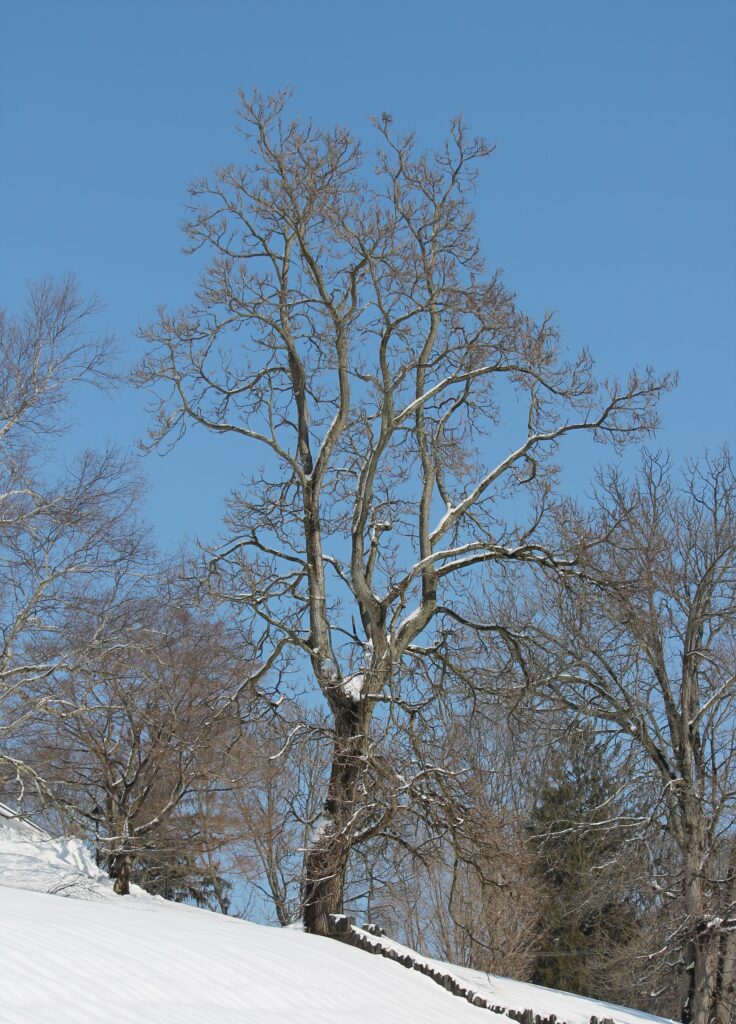
Choosing the Right Shade Tree for Your Landscape
Selecting the right tree for your landscape involves considering factors like space, growth rate, and wildlife benefits. The trees mentioned above are all native species that thrive in our region, offering shade, beauty, and ecological value. Whether you’re planting for the long-term beauty of your landscape or providing habitat for local wildlife, there’s a shade tree for every space and style.
If you’re unsure which tree is best suited for your yard, the team at GreenWeaver Landscapes is always happy to offer guidance and help you find the perfect match for your site. Contact us for advice on shade tree selection or to explore other native tree alternatives for your landscape.

